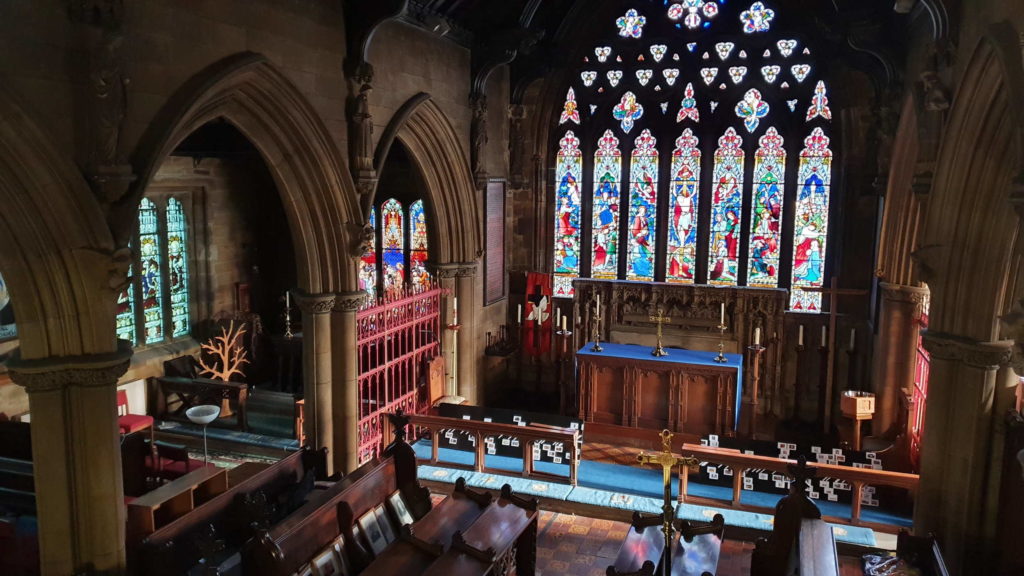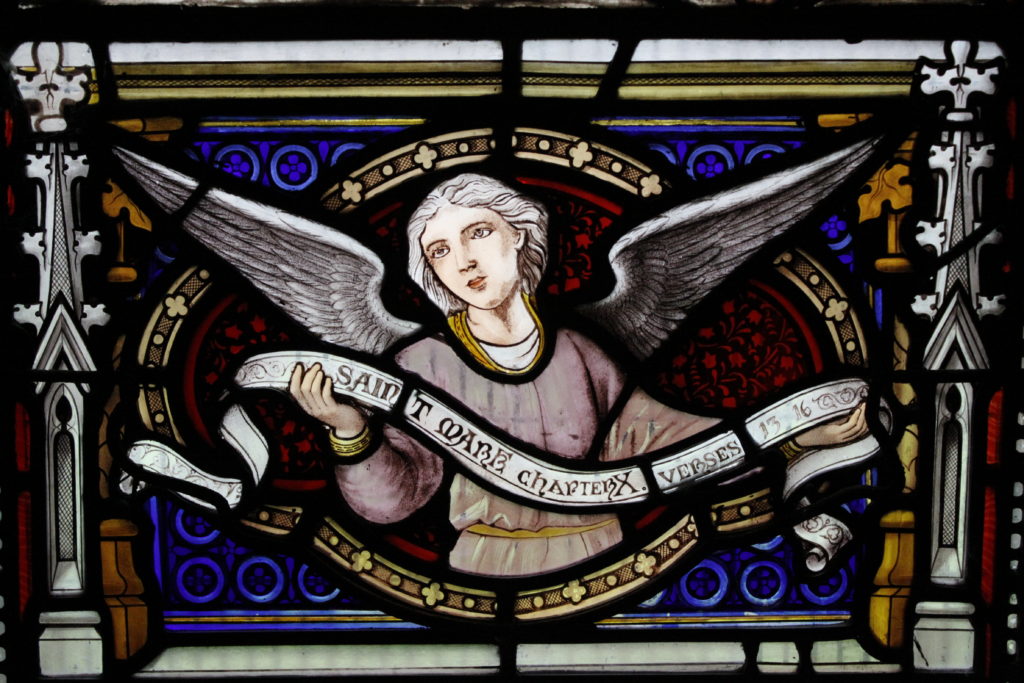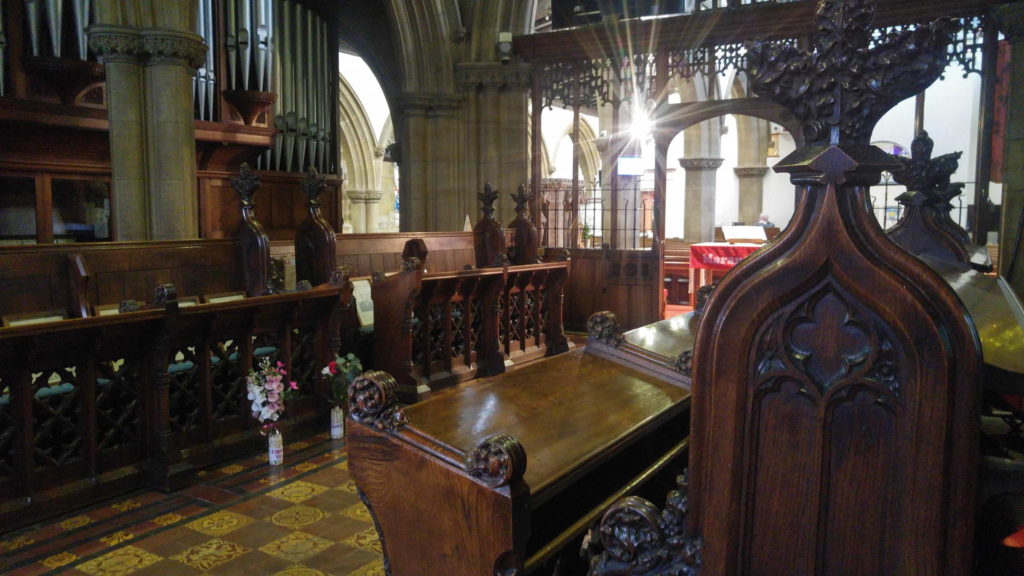The present church of St Peter, originally dedicated to St Peter and St Paul, is the fourth stone church to occupy this site. No proof exists but it is probable that a Saxon church or at least a preaching cross was here before the Norman Conquest. The Saxon settlement of ‘Burg-Steall’ (which evolved into Birstall) means the ‘place of the fortified homestead’. The settlement was fortified, no doubt, against the heathen King Penda, and this indicates that it was a Christian settlement and this would account for the stone base of a preaching cross carved with a Saxon tree pattern to be found in the church today. In the church there is also, what is believed to be, a Saxon grave slab.

The first stone church was built around 1120 AD. The lower part of the tower is all that remains from that building. It was extended in 1200. In 1301 the community of Nostell Priory were appointed Rectors of the Parish and under their auspices the church was rebuilt between 1320 and 1390. From that period we have a Norman font, holy water stoops, part of a grave slab and three Knight Hospitaller tombstones.
In 1490 the church was rebuilt again and it is in this era that St Paul was dropped from the dedication. This Tudor church was changed and added to during its 375 years. We have some remarkable carved pew ends and a unique memorial brass from this period.
Between 1865 and 1870 the present church was built, the previous one having become too dilapidated to repair. The architect was the renowned W H Crossland who incorporated into his design all the best features of church architecture over the centuries, but retained the Norman tower. In 1901 a fresco was added over the main arch – read more about it here.

The church is the home of some beautiful stained glass windows including the work of Charles Kempe, who was of Munich, designer to the Royal Court of Bavaria.a famous glass designer of the 19th century, as well as that of J B Capronnier of Belgium, F X Zettler. One window is made from stained glass which was preserved from the East window of the previous building and dates from around 1810. The subject of this rare and recently restored window, is the Resurrection of Christ.
In 1997 a wall was added at the rear of the church to create a kitchen and fellowship area and, together with the de-pewed side aisles, this has created adaptable space where exhibition, meetings, suppers etc. are now held.
